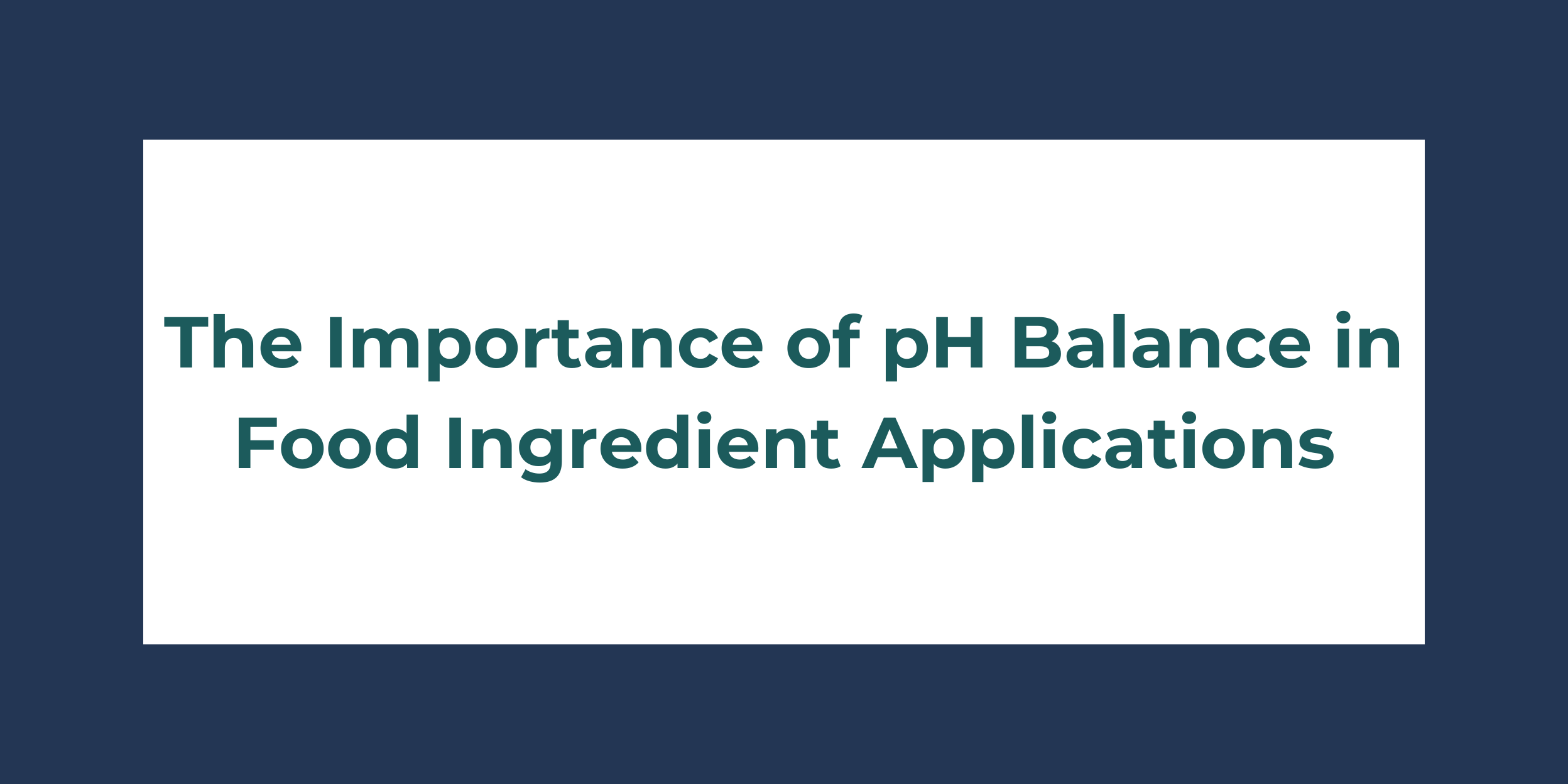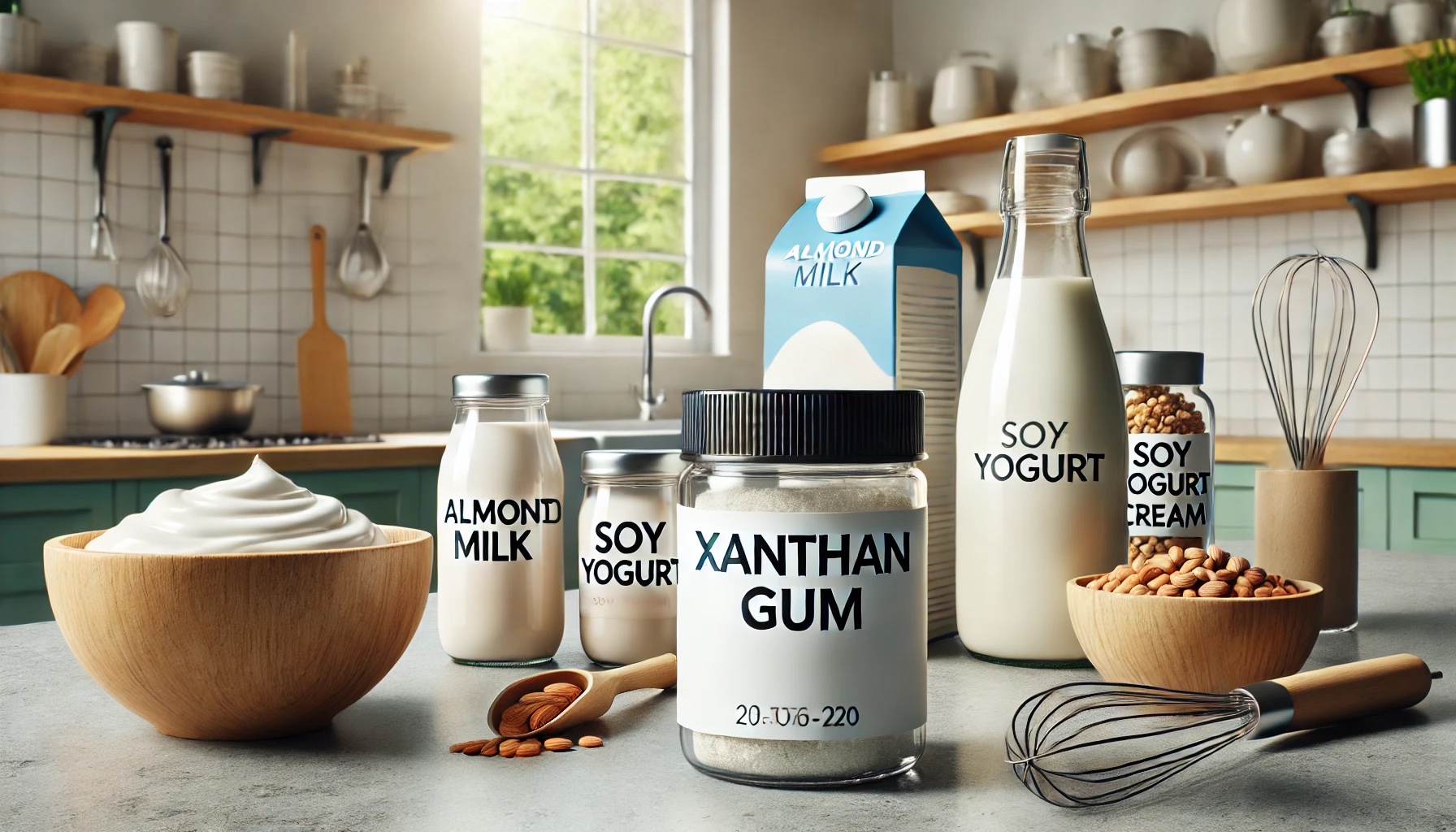Maintaining the correct pH balance is critical in food ingredient applications. pH, a measure of acidity or alkalinity, affects the flavor, texture, safety, and shelf life of food products.
Understanding how to control and adjust pH can lead to better product quality and innovation in food processing.
This blog explores the importance of pH balance, its impact on various food ingredients, and the strategies used to manage pH in food manufacturing.
Understanding pH Balance
What is pH?
pH is a scale that ranges from 0 to 14, with 7 being neutral.
Values below 7 indicate acidity, while values above 7 indicate alkalinity.
Each unit change on the pH scale represents a tenfold difference in acidity or alkalinity.
Why is pH Balance Important in Food?
pH influences several key aspects of food, including:
- Taste: Acidity or alkalinity can enhance or suppress flavors.
- Texture: pH affects the consistency and mouthfeel of food products.
- Microbial Stability: Lower pH levels inhibit the growth of harmful bacteria and extend shelf life.
- Chemical Reactions: Many food processing reactions, such as Maillard browning and enzymatic activity, are pH-dependent.
pH Balance and Food Safety
Microbial Growth Control
One of the most critical roles of pH in food safety is controlling microbial growth. Many pathogenic microorganisms cannot survive in highly acidic environments. For instance:
- Acidic Foods: Products like pickles, yogurt, and certain cheeses have low pH levels that prevent bacterial growth.
- Alkaline Foods: While less common, some foods, such as alkaline noodles, use high pH to inhibit microbial activity.
Preservation Techniques
Manipulating pH is a common method for preserving foods. Techniques include:
- Fermentation: Produces lactic acid, lowering pH and preserving products like sauerkraut and kimchi.
- Acidification: Adding acids like vinegar or citric acid to lower the pH of products, thereby extending their shelf life.
pH and Food Quality
Flavor Enhancement
pH significantly affects the taste profile of foods:
- Acidity: Enhances tartness and freshness in fruits, beverages, and dressings.
- Alkalinity: Can mellow flavors and is used in products like pretzels and alkaline noodles.
Texture and Consistency
The pH level can alter the texture and consistency of food products:
- Dairy Products: pH is crucial in cheese making, affecting coagulation and the final texture of the cheese.
- Meat Processing: Adjusting pH in meat products can improve tenderness and water retention.
Color Stability
pH also influences the color of food products, which affects consumer perception and appeal:
- Anthocyanins: These pigments in fruits and vegetables change color with pH, appearing red in acidic environments and blue in alkaline conditions.
- Browning Reactions: Maillard browning, which imparts a desirable color and flavor to baked goods, is influenced by pH.
Managing pH in Food Manufacturing
Acidulants and Alkalizing Agents
Food manufacturers use various substances to adjust pH levels:
- Acidulants: Common acidulants include citric acid, lactic acid, and acetic acid, which lower the pH and enhance tartness and preservation.
- Alkalizing Agents: Ingredients like sodium bicarbonate and potassium carbonate raise the pH and are used in products like baked goods and beverages.
Buffer Systems
Buffer systems help maintain a stable pH in food products, even when external factors change:
- Phosphate Buffers: Used in dairy products and beverages to stabilize pH.
- Citrate Buffers: Common in fruit juices and carbonated drinks to maintain consistent acidity.
pH Measurement and Control
pH Measurement Techniques
Accurate pH measurement is essential for quality control in food manufacturing:
- pH Meters: Provide precise measurements and are commonly used in laboratories and production lines.
- Indicator Strips: Offer a quick and easy way to estimate pH but are less accurate than pH meters.
pH Control Strategies
Effective pH control involves several strategies:
- Monitoring: Regular pH testing during production to ensure consistency.
- Adjustment: Adding acidulants or alkalizing agents as needed to maintain the desired pH.
- Documentation: Keeping detailed records of pH measurements and adjustments for quality assurance.
Case Studies in pH Management
Dairy Industry
In the dairy industry, pH control is vital for product quality:
- Cheese Making: The pH affects coagulation, texture, and flavor development in cheese.
- Yogurt Production: Fermentation lowers the pH, creating the desired tartness and consistency.
Beverage Industry
Beverages also rely heavily on pH management:
- Soft Drinks: The pH affects flavor, carbonation, and microbial stability.
- Juices: Maintaining the correct pH ensures consistent taste and shelf life.
Conclusion
pH balance is a fundamental aspect of food ingredient applications, influencing safety, quality, and sensory attributes.
By understanding and controlling pH, food manufacturers can enhance product stability, extend shelf life, and create desirable flavors and textures.
From dairy to beverages, effective pH management is essential for producing high-quality food products that meet consumer expectations.








